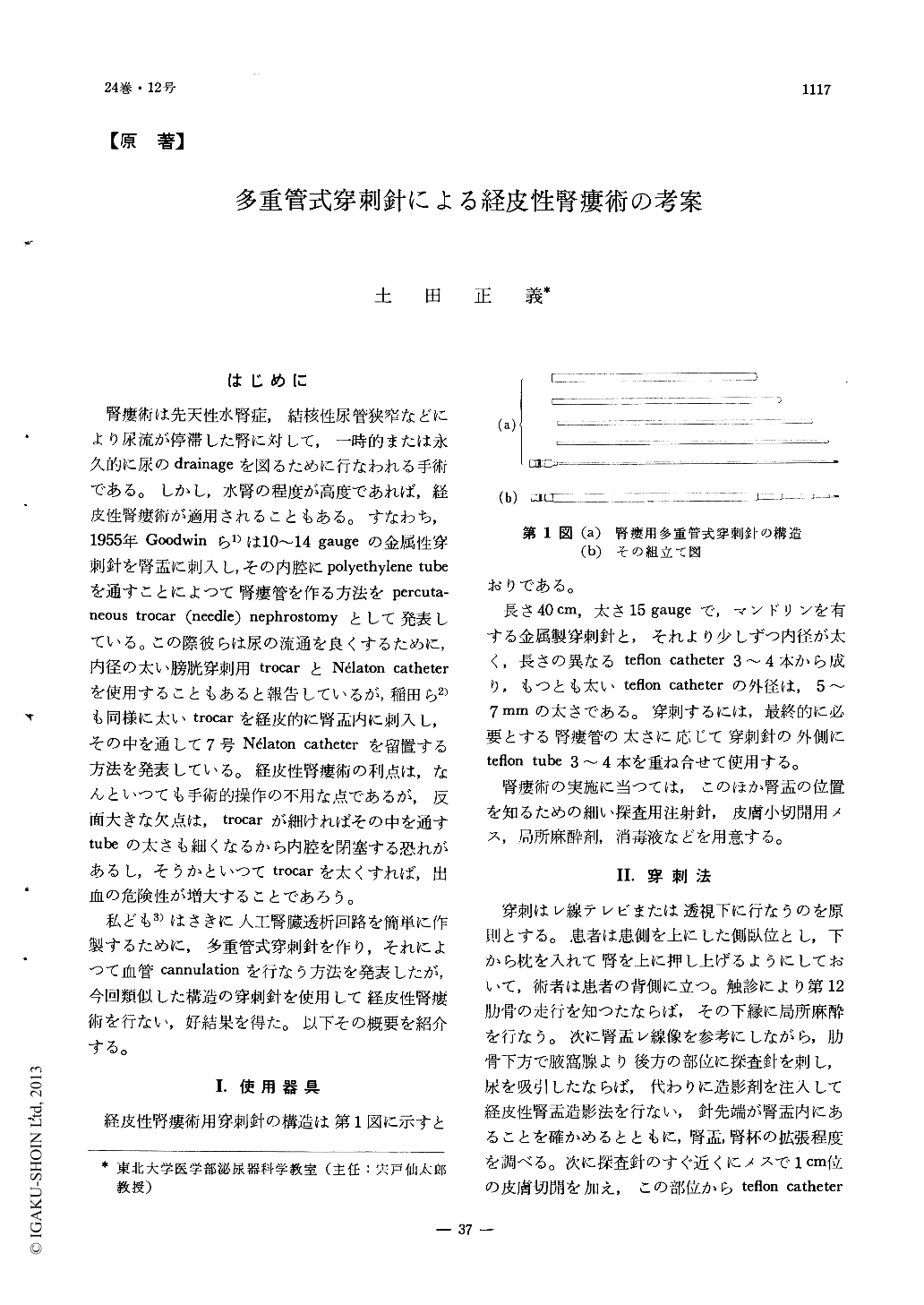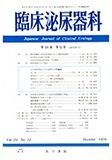Japanese
English
- 有料閲覧
- Abstract 文献概要
- 1ページ目 Look Inside
はじめに
腎瘻術は先天性水腎症,結核性尿管狭窄などにより尿流が停滞した腎に対して,一時的または永久的に尿のdrainageを図るために行なわれる手術である。しかし,水腎の程度が高度であれば,経皮性腎瘻術が適用されることもある。すなわち,1955年Goodwinら1)は10〜14gaugeの金属性穿刺針を腎盂に刺入し,その内腔にpolyethylene tubeを通すことによつて腎瘻管を作る方法をpercuta-neous trocar (needle) nephrostomyとして発表している。この際彼らは尿の流通を良くするために,内径の太い膀胱穿刺用trocarとNélaton catheterを使用することもあると報告しているが,稲田ら2)も同様に太いtrocarを経皮的に腎盂内に刺入し,その中を通して7号Nélaton catheterを留置する方法を発表している。経皮性腎瘻術の利点は,なんといつても手術的操作の不用な点であるが,反面大きな欠点は,trocarが細ければその中を通すtubeの太さも細くなるから内腔を閉塞する恐れがあるし,そうかといつてtrocarを太くすれば,出血の危険性が増大することであろう。
A multitube trocar was deviced by us for percutaneous nephrostomy which lead to a fairly good result and the structure and method is reported.
The trocar consists of a 40 cm long 15 gauge metal needle and 4 teflon cannula with differentdiameter and length. The teflon cannula are covered one after another over the metal trocar at use. Nephrostomy is done like the conventional percutaneous trocar nephrostomy under fluoroscopy. The external cannula is pushed in as the inner teflon cannula is pulled out, after the tip has reached the kidney pelvis and the most external cannula is left as nephrostomy tube.

Copyright © 1970, Igaku-Shoin Ltd. All rights reserved.


